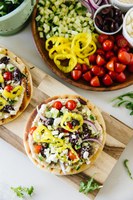Prairie Fare: Which Protein Foods Have You Tried?
(Click an image below to view a high-resolution image that can be downloaded)
Do they really expect me to eat this? I thought to myself.
My dad and my grandfather on my mom’s side used to enjoy “old country” delicacies now and then.
“Do you want some blood sausage?” one asked with a chuckle.
“How about some head cheese?” the other one asked as he added some vinegar and pepper.
I’m surprised one of them didn’t hand me a plate of lutefisk.
They knew my response. I was not an adventurous eater in those days. I left the kitchen.
With a few notable exceptions, I grew up eating all sorts of protein, both domestic and wild game. I happily ate pheasant, grouse, goose and venison during hunting season and freshly caught fish.
Beef, chicken, turkey, pork and other meats, poultry and eggs regularly were on our menu. We also had a wide variety of plant proteins, including all types of beans.
By the way, according to the recent recommendations, on average, adults need about 6 to 7 ounces of protein daily. One ounce of protein equals one egg, 1 ounce of domestic or wild game meats or fish, 1/4 cup of cooked beans, 6 tablespoons of hummus or 1/2 ounce of nuts or seeds.
However, I had never tasted lamb while growing up. Lamb, like other meats, is a rich source of protein and minerals such as zinc, iron and selenium.
Later, I developed a taste for a wider range of protein foods, including lamb. When I ate at a Mediterranean restaurant as a teenager, I discovered gyro (pronounced “ye-row”) sandwiches.
Gyros can be made from a variety of meats, often lamb, pork, beef or chicken. I recall seeing the lamb meat being roasted on a rotating tower.
The word “gyro” means “to turn” in Greek.
Food historians report that the gyro originated with Alexander the Great, when soldiers roasted meat on their swords over a fire.
Before writing this column, I checked in with our sheep specialist at NDSU, Travis Hoffman. He helped me acquire some information, including the recipe and photo for this week’s column.
Ground lamb is likely the most common item a consumer can find this fall at many local grocery stores. A majority of lamb is sold in the Northeast region of U.S., so availability sometimes is the most limiting factor in our region.
The COVID-19 pandemic has positively impacted American lamb sales at retail. Lamb volume has increased from 20% to 30% annually and captured the greatest demand gains in the protein sector.
Consumers did not patronize restaurants as frequently in 2020 to 2021, and at-home cooking is much more fun with innovative recipes. Make lamb tacos, create your own lamb burger or add lamb to your favorite pasta dish.
Hoffman’s go-to lamb flavor pairings are traditional with garlic, rosemary and feta cheese, which are all featured in this week’s recipe.
This recipe is courtesy of the American Lamb Board. Olives and feta cheese are tasty but notably high in sodium. To reduce sodium, use fewer olives and less feta (or rinse it), and omit the salt.
See www.americanlamb.com for more delicious lamb recipes. The pitas can be “grilled” on the stovetop in a pan or with a panini press.
If you would like to make your own tzatziki dressing, see the NDSU Extension publication at https://www.ndsu.edu/agriculture/extension/publications/field-fork-cucumbers to view “Field to Fork Cucumbers.”
To make your own hummus, see the NDSU Extension publication at https://www.ag.ndsu.edu/publications/food-nutrition/pinchin2019-pennie-in-the-kitchen-hummus-roasted-chickpeas-and-more-how-to-use-chickpeas-in-your-recipes to view “Pinchin’ Pennies in the Kitchen: Hummus, Roasted Chickpeas and More!”
Grilled American Lamb Greek Pita Pizzas
1 pound ground American Lamb
6 pita rounds
1 tablespoon olive oil
1 1/2 cups hummus
1 cucumber, seeded and finely chopped
1/2 red onion, sliced thin
1 cup cherry tomatoes, halved
1/2 cup Kalamata olives, halved
1/2 cup banana peppers, sliced
1/2 cup feta cheese, crumbled
1 bottle tzatziki salad dressing (about 6 ounces)
2 teaspoons oregano
4 rosemary sprigs, chopped
1 to 2 tablespoons garlic powder
1 teaspoon salt (optional)
1/4 teaspoon pepper
Preheat your grill to medium high (or use broiler). Brush each side of the pita with olive oil then lightly season with salt and garlic powder. Place directly on grill grates. Grill for 1 to 2 minutes. Flip and grill another 2 to 3 minutes. Set aside. Alternatively, broil in an oven. Meanwhile, heat 1 teaspoon olive oil in a large skillet over medium heat. Once hot, add the ground lamb and a pinch of salt. Cook until lamb is no longer pink, breaking it into pieces with a spoon as it cooks. Drain and rinse (under hot water in strainer) any excess grease. Add garlic powder, rosemary, oregano and pepper to lamb. Saute until fragrant. Taste and adjust seasonings as needed. Serve pitas warm with toppings on the side. Layer pita, hummus and ground lamb then top each pizza with cucumber, red onion, tomatoes, olives, banana peppers and feta. Drizzle tzatziki dressing on top.
Makes six sandwiches. Without added salt, each serving has 320 calories, 17 grams (g) fat, 19 g protein, 25 g carbohydrate, 2 g fiber and 740 milligrams sodium.
(Julie Garden-Robinson, Ph.D., R.D., L.R.D., is a North Dakota State University Extension food and nutrition specialist and professor in the Department of Health, Nutrition and Exercise Sciences. Follow her on Twitter @jgardenrobinson)
NDSU Agriculture Communication – Nov. 4, 2021
Source: Julie Garden-Robinson, 701-231-7187, julie.garden-robinson@ndsu.edu
Editor: Elizabeth Cronin, 701-231-5391, elizabeth.cronin@ndsu.edu




